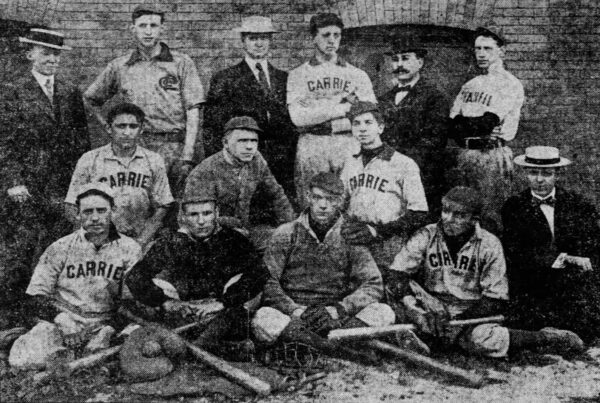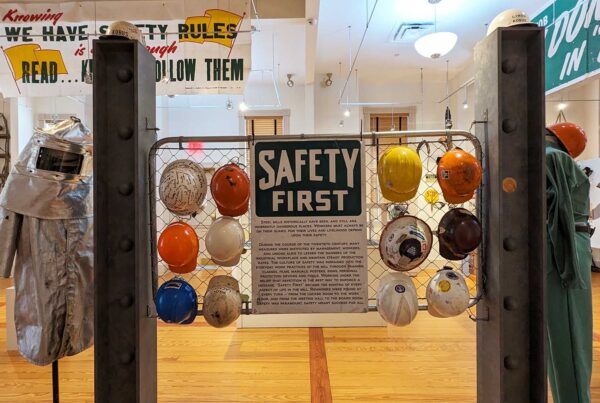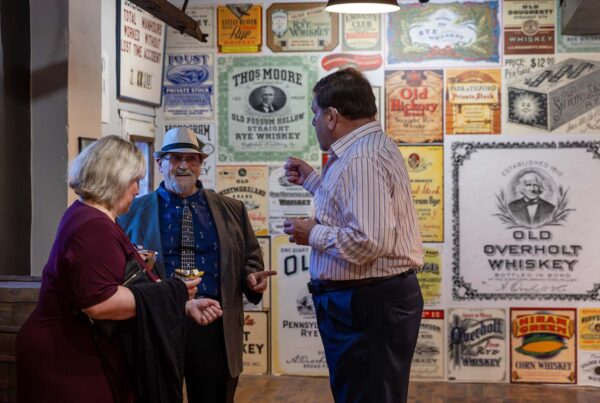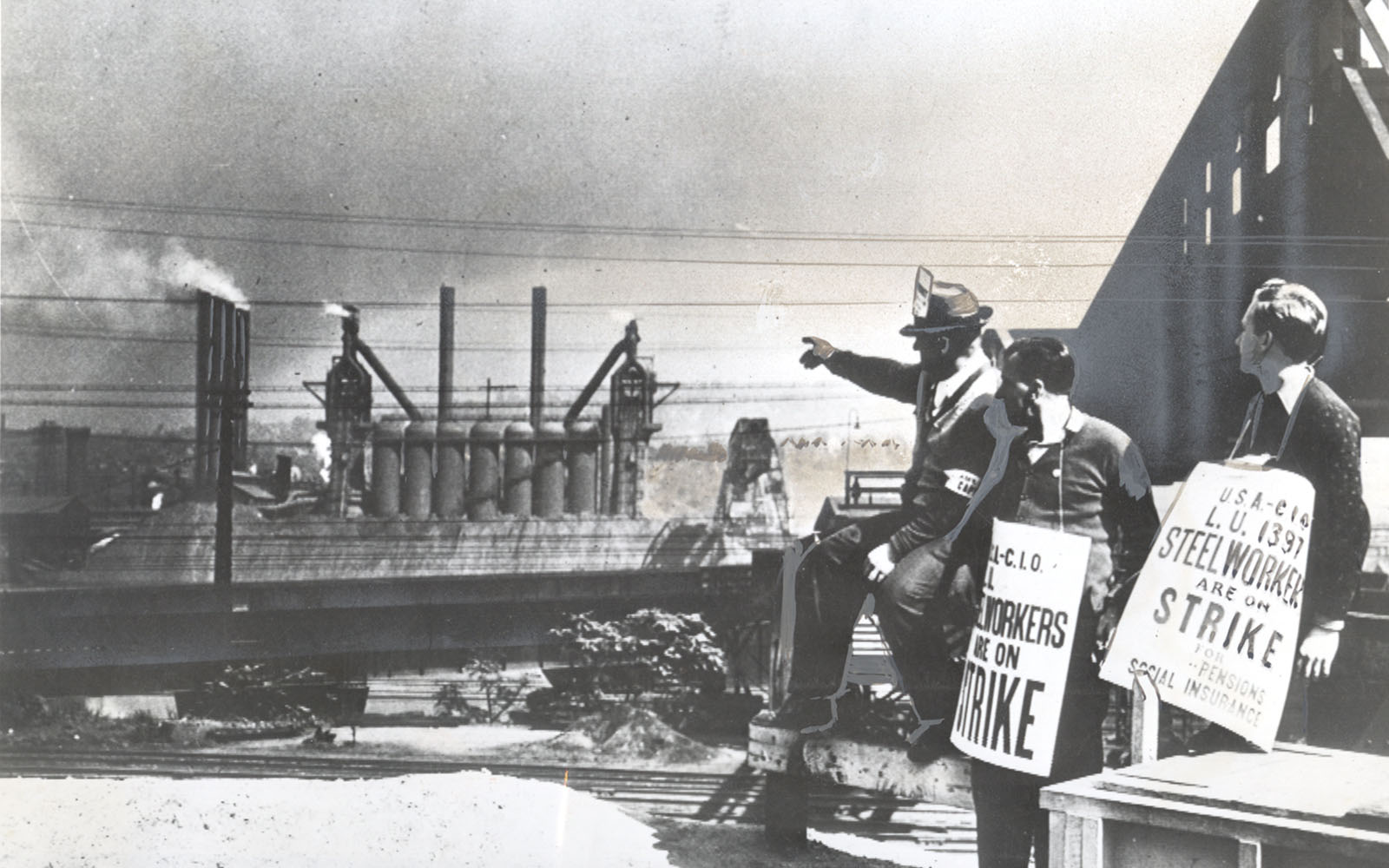
Strikers from Local Union 1397 in Homestead point towards the Carrie Blast Furnaces. Image from the Rivers of Steel Archives.
May Day & the Legacy of Labor
In honor of May Day, Interpretive Specialist Ryan Henderson reflected on the origins of the holiday and the impact of labor on our region.
By Ryan Henderson
Understanding May Day
Now that April showers are behind us and May flowers ahead, May Day is here and with it the perfect opportunity to reflect on labor history and the importance of preserving and memorializing that history.
You may be asking, “What does May Day have to do with labor?” Though May Day might conjure up images of twirling ribbons around the maypole to celebrate spring and the coming of summer, the holiday has a different connotation across much of the world. Also known as International Workers’ Day, the holiday celebrates workers, the working class, and the labor movement, and is recognized as a public holiday akin to the American Labor Day in many countries. In France, for example, the day is a national holiday that most people have off; it is well known for coinciding with marches, parades, and protests.
The idea for tying May 1 to the cause of labor was proposed in 1904 by the Second International, a group of Socialist and Labor parties. They intended May Day to serve as a day for demonstrations pushing for an eight-hour workday, in addition to a way to honor the working class and labor movement more generally. The fight for an eight-hour day was one of the major workers’ rights issues of this era, where ten- or even twelve-hour days were the norm.
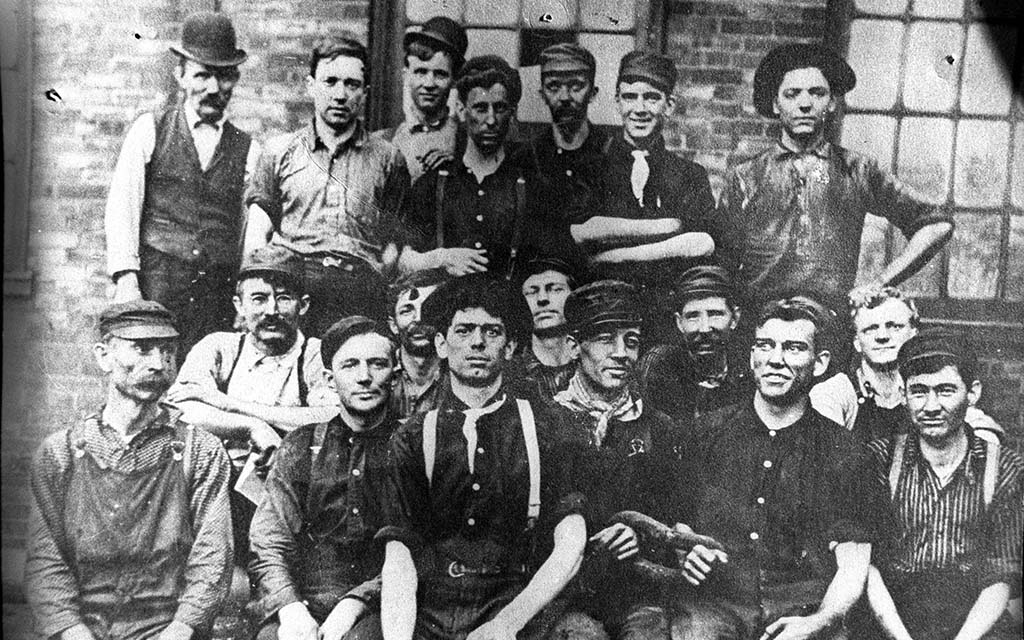
Workers from the 1880s. Image from the Rivers of Steel Archives.
The Second International chose May 1 as it coincided with the beginning of the 1886 general strike, a push for the eight-hour day that concluded in the infamous Haymarket Affair. This incident—one of the most important days in American labor history—saw a rally in Haymarket Square in Chicago descend into violence and chaos as a bomb was thrown into the path of several policemen attempting to disperse protesters, resulting in several deaths. The ensuing trial and execution of those held to be responsible was and remains controversial, with members of the labor movement of the time insisting that the men convicted were falsely accused and that the bomb had actually been thrown by individuals working for business interests to create a backlash against labor.
While the original May Day was directly linked to these events and the specific goals of labor in the late 19th century, the day has become more generally a day honoring the causes of the working class. As the push for the eight-hour workday was successful in many parts of the world, May Day came to represent a holiday celebrating the labor movement and its accomplishments more generally, while still serving as a day of protest and demonstration.
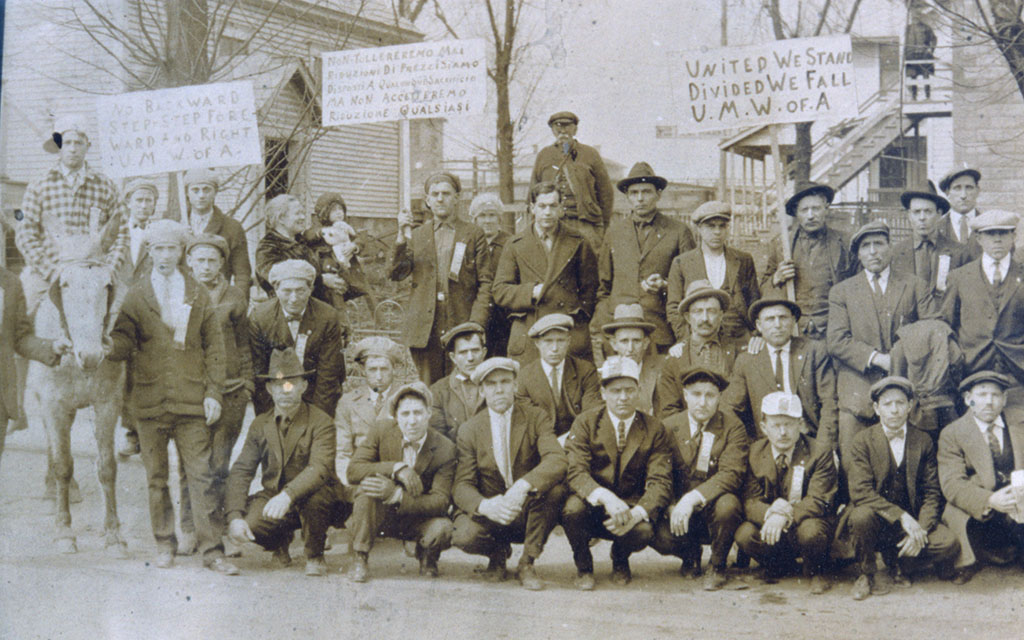
United Mine Workers of America. Image from the Rivers of Steel Archives.
The Legacy of the Labor Movement
Though many Americans are not union members or part of organized labor, the contributions of workers’ rights movements to our society today are innumerable, in ways many of us do not often stop to consider. Many workplace protections and laws we take for granted as part of a standard day at work were the result of decades of struggle. Things like the aforementioned eight-hour day, child labor laws, minimum wage, workplace safety laws, and the right to organize only exist today as a result of decades of protest, strikes, demonstration, and lobbying.
Much of the benefits workers enjoy today, such as paid time off, owe a great deal to the labor movements of the late 19th and early 20th centuries. Gaining these protections for future generations was not without a great deal of sacrifice on the part of many activists. Blacklisting, jail time, and serious risk of injury and even death was common. As many owners and business leaders in this period were loath to give up power in the workplace, those fighting for workers’ rights were often met with violence and suppression. The fight for rights in the workplace was often a literal battle, with several instances of armed conflict between industry and labor, whether in the coalfields of West Virginia or here in Pittsburgh. Many owners hired union busters, Pinkertons, various “detective agencies,” or bought off local law enforcement to suppress workers by any means necessary.
While labor conflicts and the resulting upheaval are often overlooked parts of American history, they are nonetheless events of monumental importance that deserve greater honor and recognition.
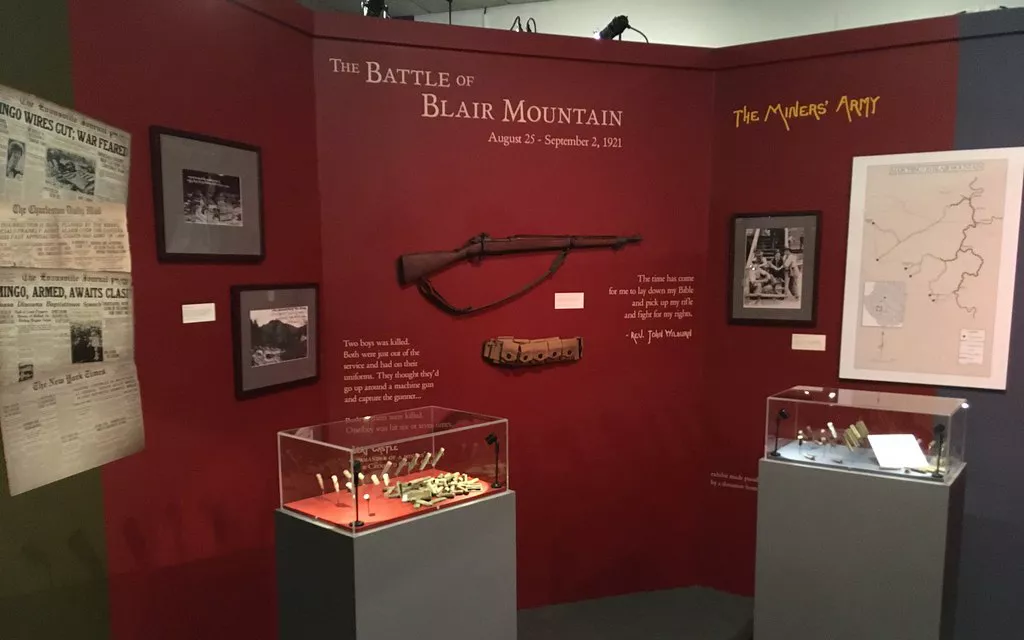
Visitors to the West Virginia Mine Wars Museum can learn about the Battle of Blair Mountain. Image courtesy of the West Virginia Mine Wars Museum.
The (Literal) Fight for Workers’ Rights
Take, for example, the Battle of Blair Mountain, a confrontation with the miners of Logan County, West Virginia on one side and forces including the West Virginia Sheriff’s Department and hired representatives of local coal companies on the other. The battle, which occurred from late August to early September 1921, was the largest uprising in U.S. history and the largest armed conflict in the United States since the end of the Civil War.
Part of the larger Coal Wars of this period, the battle was precipitated by increasingly hostile confrontations between members of the United Mine Workers and agents of mine ownership such as the Baldwin-Felts Detective agency. The miners pushed for greater unionization and resisted the eviction of miners and their families from company towns following retaliatory mass firings of workers who had joined the union.
After these tensions boiled over into a gunfight in the town of Matewan that left several Baldwin-Felts detectives and miners dead, both sides continued to steadily move toward open conflict despite attempts by various figures, such as Mother Jones, to stave off a bloodbath. Eventually a multiday battle took place, resulting in over one hundred deaths. The fighting was incredibly fierce and even saw the use of private planes hired by the coal companies to drop leftover World War I munitions on miners. The miners were forced to surrender, and nearly one thousand of their number were arrested.
While this represented a victory for the coal companies of the time, it paved the way for a new wave of union organizing and tactics, as well as a greater public sympathy for the appalling conditions that miners faced and the severity of the situation in coal country. Eventually, the unions rallied and won major victories in the 1930s, creating larger, stronger, and better organized movements that continued to win further labor protections.
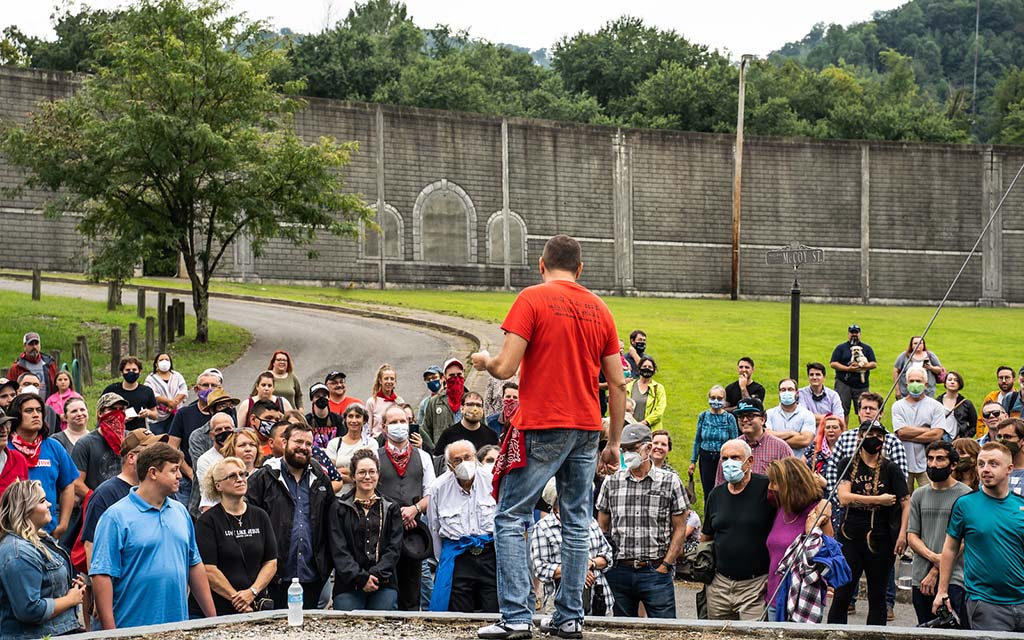
More than 120 people attend the walking tour of Historic Matewan by the West Virginia Mine Wars Museum during the Blair 100 activities. Image courtesy of the West Virginia Mine Wars Museum.
Though many Americans may not know the story of Blair Mountain, historians are hard at work to preserve its legacy and help to bring the event and struggles in the coal industry into the wider public consciousness. The Battle of Blair Mountain celebrated its centennial in 2021, a weekend marked with marches, speeches, talks, and panels with organizations across the country, including Rivers of Steel.

The West Virginia Mine Wars Museum
Visitors to Matewan today can visit the West Virginia Mine Wars Museum, which collects, preserves, and interprets the history of Blair Mountain and other similar conflicts. While the Battle of Blair Mountain and the Mine Wars Museum is only one example, there are dozens of museums and organizations working today to memorialize or preserve labor history. Museums looking at the history of specific fields, like the automotive or textile industries or specific events like the Triangle Shirtwaist Fire, can be found all across America, working to elevate the stories of workers’ struggles for rights and fair treatment.
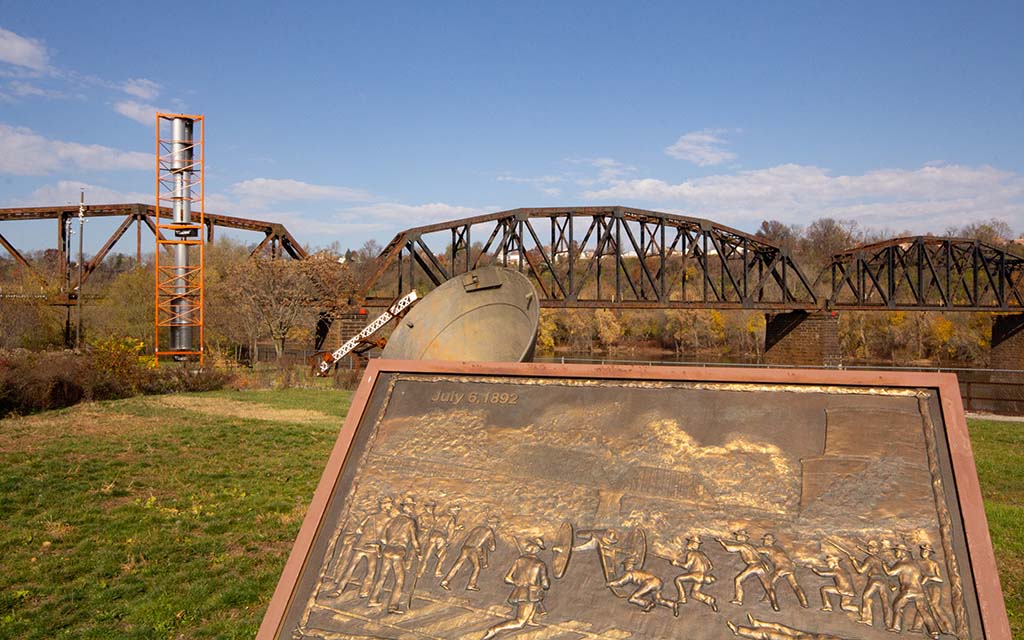
Visitors to the Pump House in Munhall can learn about the Battle of Homestead.
Honoring the Everyday Worker
At Rivers of Steel, we believe the memorialization of labor history is an incredibly important part of not only the legacy of the steel and iron industry, but the legacy of the Pittsburgh region. Many nationally important labor events took place here, such as the Battle of Homestead, which you can learn more about here. Today, visitors can stop by the Pump House to walk the grounds of the battle or come to the Bost Building, where the Amalgamated Union was headquartered during the conflict.
The story of labor, though, is more than just the physical remains of these events. We believe it is important to not merely tell the story of industrialists like Andrew Carnegie and Henry Clay Frick, but also to focus on the everyday stories of workers. All too often, the experiences of men and women who worked “regular” jobs are not given equal attention to the experiences of industrial leaders to the detriment of our understanding of the events that shaped American life. While the story of industry as a force moving American life is important, the individual stories upon which that narrative is constructed need to be told as well, with the attendant conflict that was a part of labor in the 20th century likewise included.
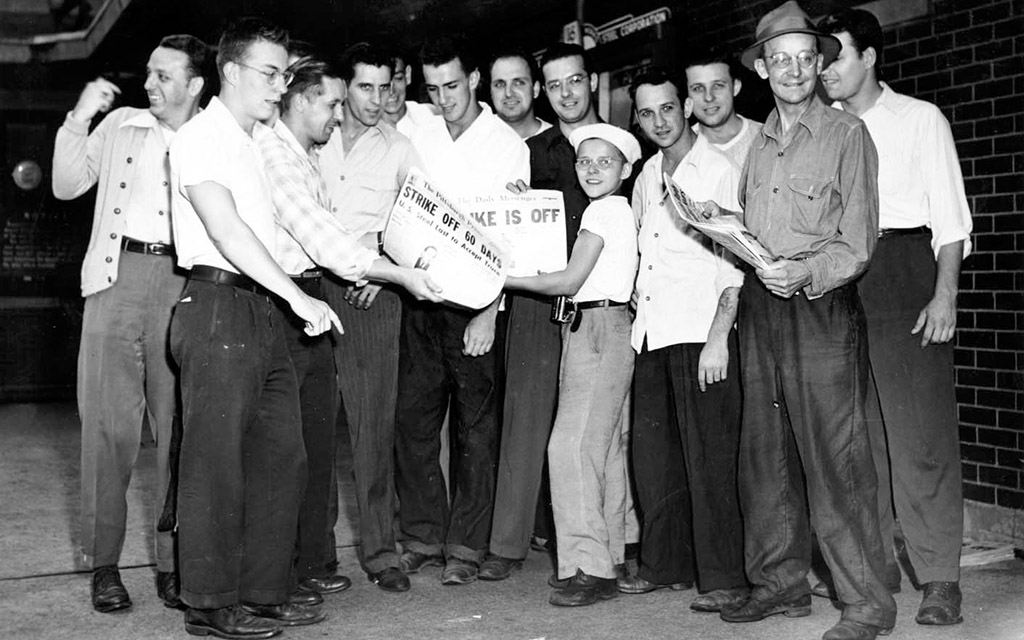
A group assembled at the end of a sixty-day strike. Image from the Rivers of Steel Archives.
To that end Rivers of Steel has, in addition to our historic facilities, worked to preserve a series of materials related to labor in our archives. Union contracts, pamphlets, meeting minutes, newsletters and newspapers, pins, buttons, and ID badges are all there, as are books relating to labor, photographs of strikes and labor conflicts, contemporary newspapers, and even letters and communiqués from events like the Homestead Strike. Rivers of Steel uses some of these materials as the basis for many of our exhibits and programs, but the archive is free and open to the public for research purposes as well, and we encourage interested parties to contact us to set up a time to visit.
In the meantime, however, spare a thought this May Day for the workers who came before us and all they sacrificed so that we might enjoy a safe, fair workplace today, and don’t forget the many struggles that are ongoing to keep these rights into the future.
 Ryan Henderson is an interpretive specialist and grant writer with Rivers of Steel. You can also catch him giving the occasional tour at the Carrie Blast Furnaces.
Ryan Henderson is an interpretive specialist and grant writer with Rivers of Steel. You can also catch him giving the occasional tour at the Carrie Blast Furnaces.
If you liked this reflection, you may want to read article A Home for the Culture of Steel.

